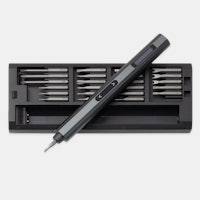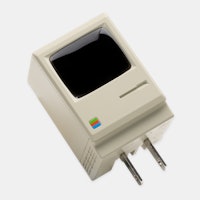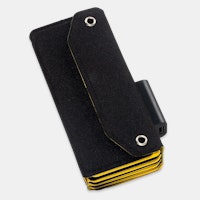Click to view our Accessibility Statement or contact us with accessibility-related questions


PRODUCTS YOU MAY LIKE
Trending Posts in More Community Picks

Graham88
Completely surprised by the lack of blade diversity here on Drop...
I’ve been a collector of Blades since before my teens, and a retailer coming up on 15… or maybe 20 years. Drop has really been kind of an interesting experience for me, because I do occasionally get to see some unusual tech and sometimes EDC items that otherwise I might not have been aware of. And maybe it’s because I have a deep love of cutlery and bladed weapons, but I find myself trolling through the site looking at it what’s available; and it’s just it’s pretty much the same. And the bladed community here is just always confused me.. every single knife is about the same, they’re almost all drop points and although the handle materials change and brands change.. it’s really just the same knife over and over and over again... occasionally you’ll see a tanto or a slight variant; but rarely… and almost never a serrated blade. And I’m just deeply amazed at this diversion of serrated blades. And I’m just surprised there isn’t more of a request for diversity here.... and I...
Mar 12, 2020
JellyDPhoto
Can we get Sony E-Mount or other mirrorless camera options please..
Would be nice to see some Sony E mount full frame cameras on here. I currently shoot with a A99 and they killed the lense path for better or more option lenses and now is all E-Mount. 🤔
Jan 13, 2020
RayF
There Are Pandas, and Then There Are Pandas.
And this isn't either of them! The Pandas we're talking about here, are watches, not bears. And what got me thinking about them (again) was a link posted this morning by @cm.rook who pointed a few of us to the very attractive (and not terribly priced) Yema "Rallygraph" Panda which, in it's most traditional arrangement, looks like the one on the left, but can also be had in the version on the right: The model on the left is a true Panda, while the model on the right is called a reverse Panda. The reason for that distinction is clear--Panda bears, only come in the first arrangement. Now at this point, everyone should be thinking about the most well-know Panda, The Rolex Panda, which is actually a Daytona, and among Rolex Daytonas, the most famous of which is the Paul Newman Daytona, which was famous first, because it was Paul's, and second because it sold at auction for $17.8 million (US Dollars). The story of that auction is well-known so I'll only...
Nov 8, 2019






I am also a lefty, and I wind up "over writing" with my notebook/ paper/ journal at a 45 degree angle "uphill" (away from me). It works well in my case. I also tend to enjoy using Japanese EF (~0.2mm) nibs and frequently use carbon inks so even if my hands have moisture on them, it won't smudge the ink once it has had a chance to dry.
Still, there are some times that I have managed to get my writing to smudge. If you find it really bad, you may want to look into investing in some absorption (also called blotting paper) paper to put under your left hand while writing (between your skin and the sheet of paper you are writing on) to help blot up excess ink as you go over it. I haven't personally used any, but it is supposed to help.
1) write more! no, more! more than that! keep writing! I have found that physically writing things down helps me remember them much better than typing or not recording them at all. I write in meetings, on phone calls, when I'm studying/learning something new, when I'm working, basically continuously. I think it's much better to have disorganized/messy notes than no notes at all - practicing creating not-so-good notes helps one record and organize information better. You'll figure out if underwriting / bullet journaling / other organizational schemes work for you as you try them.
2) you may have really different outcomes using different inexpensive pens. I used Papermate Profile ballpoints and Papermate Flair felt-tip pens exclusively for years before I got into fountain pens. I find needle-point pens inconveniently fragile and gel pens prone to smearing/smudging, but you might not.
3) How fast ink dries varies a lot depending on paper. Super cheap paper (e.g. generic store-brand notebooks) might absorb ink fast and "feather" (i.e. ink spreads around on the page) or "bleed" (i.e. go through the page to the next page). If you're using a ballpoint pen or a relatively dry ink, though, this might not matter. Physically smaller notebooks tend to be cheaper than larger ones - maybe grab the Goulet notebook sampler and a few different smallish ones from a local big box store to see what works for you. I really like Mnemosyne and Leuchtterm, but style and preference varies.
3) I have found that I notice the experience of writing more and write more carefully with fountain pens, also, the Platinum Preppy is amazing. If you want to get into fountain pens, getting a few Preppies, a converter, a syringe, and some ink samples is a great place to start. You can use the converter to clean out the Preppies when they empty, and the syringe to clean out the Preppy cartridges and refill the cartridges with ink.
I hope this helps!
There are silky half gloves, meant for drawing on art tablets. They reduce friction between your hand and the writing surface. Since you are still in contact with the paper, it won't eliminate smearing, but may reduce it.
Play around with ink and paper combinations. Ink is only half of the equation. Thick, absorbent papers dry to the touch faster than thin or 'silky' or (most) coated papers. Some papers are rough and difficult to write on, or absorb too much ink, which gets inkspensive. Bound sketchbooks generally have nice paper for writing, but are unlined. If you don't mind using a lined template under the page, this may be a good option. I use Pentalic and ProArt brands, because of availability, sizes, and affordability, but there are lots of brands and styles. Try a few ink and paper combos to find the best writing experience for yourself.
After I am done writing I just leave the paper towel in the journal at that page - so it can also act like a poor man's ribbon if your journal doesn't have one. In the long run this may not be the best plan, but so far I haven't noticed any negative side-effects from doing it. Plus it keeps my ink where it is supposed to be, which is a big improvement over what I was dealing with before.